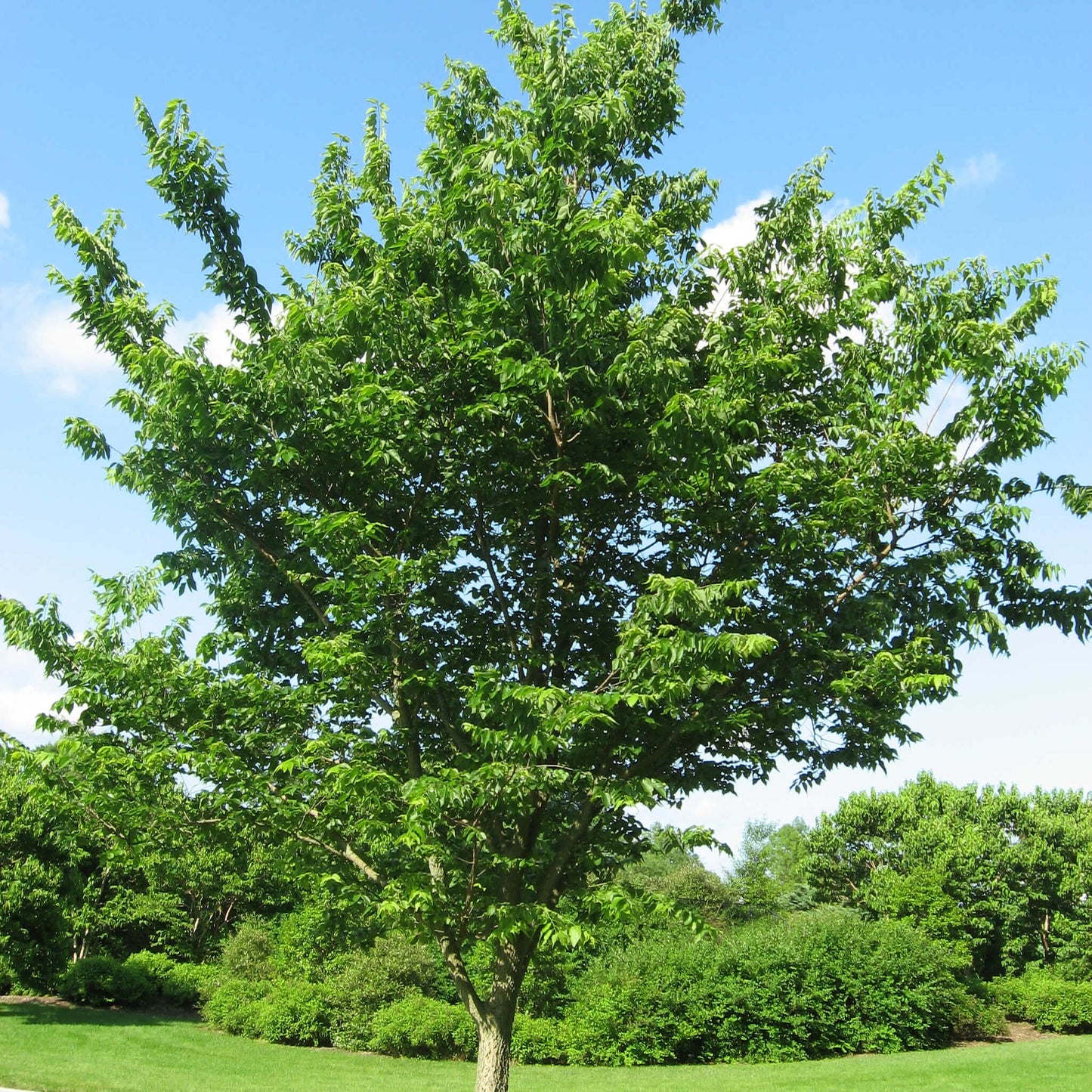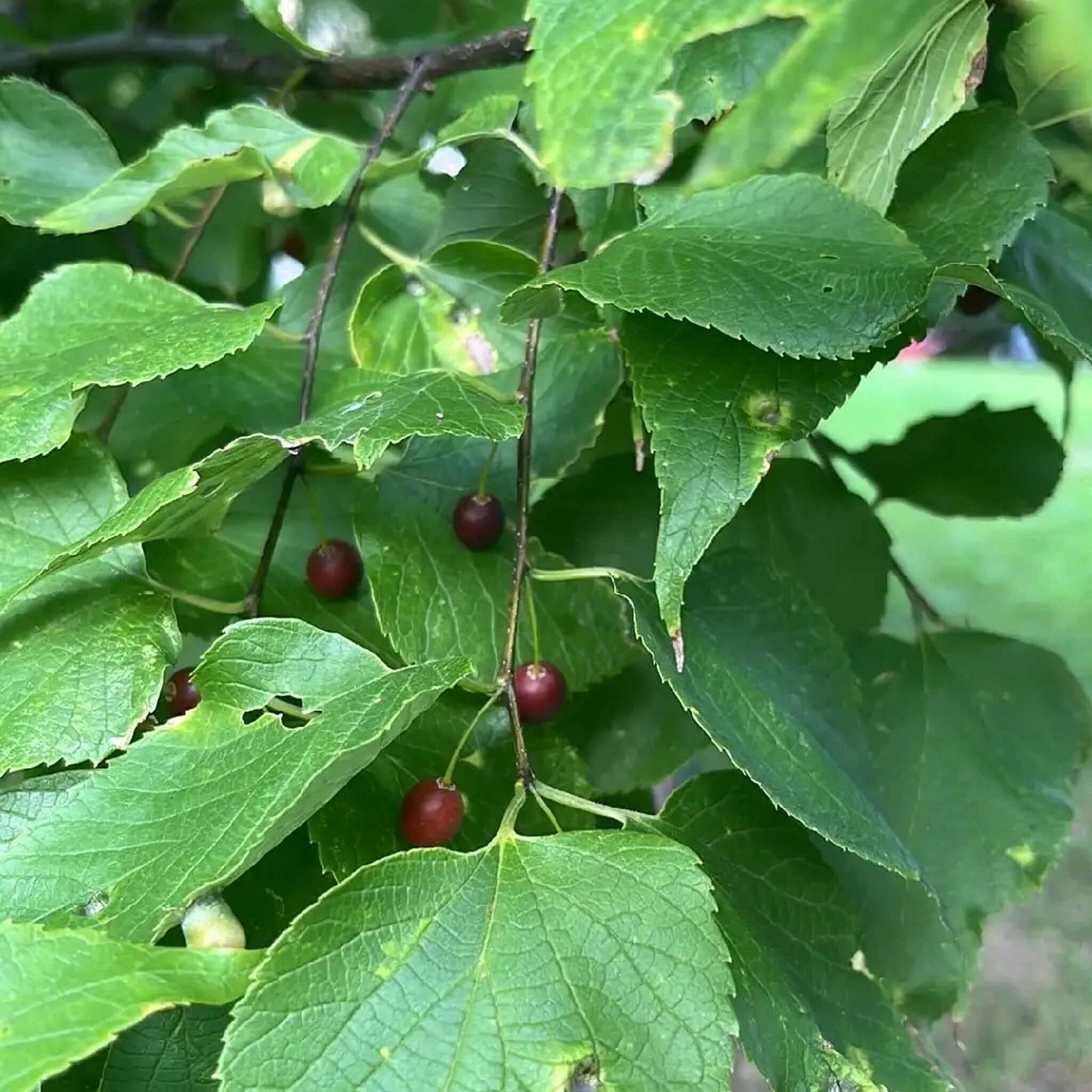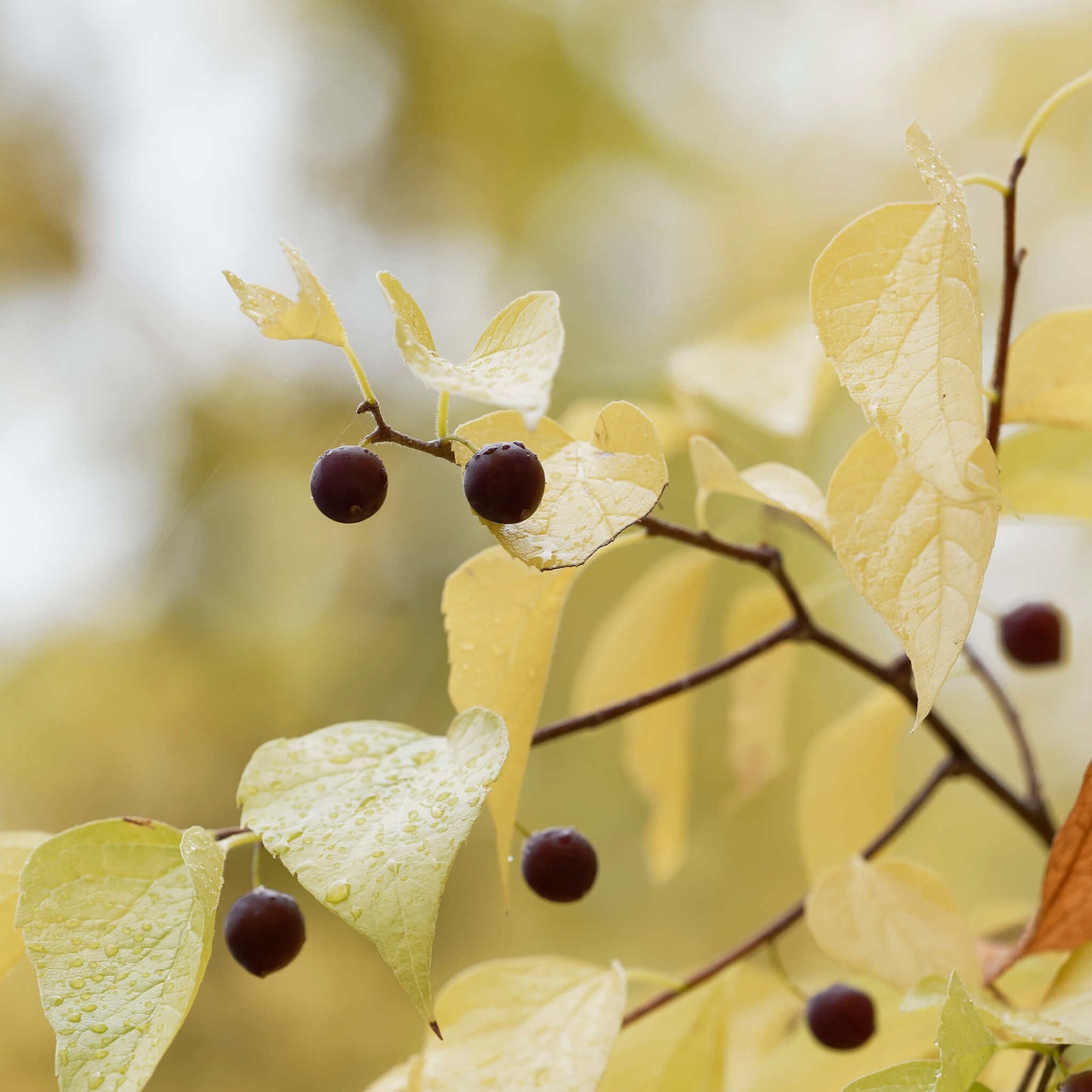For successful seedlings,
see the growing notes at the bottom of the page!
Common hackberry (Celtis occidentalis) is a robust native tree, typically reaching up to 15 meters in height, with a distinctive gray, rough, and verrucose bark. Its leaves are alternate, serrated, and dark green, turning yellow in the fall. In late spring, it produces small, inconspicuous greenish flowers, followed by orange to dark purple berries in the fall. This tree is adaptable to a variety of soils, including poor soils and urban areas, making it a versatile choice for parks, natural gardens, and reforestation projects.
Medicinal and Culinary Uses
The fruits are edible and slightly sweet. In herbal medicine, the bark is sometimes used for its astringent properties and is used as a decoction to soothe sore throats and minor inflammations.
Ecological Roles
Common hackberry plays an important ecological role by providing a food source for many birds and small mammals, particularly through its fall berries. The larvae of several butterflies and moths, including those of the viceroy butterfly (Limenitis archippus), feed on its leaves, contributing to biodiversity. Due to its ability to withstand urban conditions and stabilize soils, common hackberry is a valuable asset to riparian ecosystems and urban environments.
Common hackberry seeds require cold stratification to ensure germination. See the cultivation notes below for more details.
Akène cannot assume any responsibility for the use of plants for therapeutic purposes. Always seek advice from a professional before using a medicinal or edible plant.
Sowing and Growing
Technical Details
Seeds per packet: 100
Family: Cannabaceae
Scientific name: Celtis occidentalis
Life cycle: Perennial
Hardiness zone: 3
Soil type: Sandy to clayey
Soil moisture level: Dry to medium
Soil - additional attributes: Tolerates poor soils and drought
Light: Sun, part shade, shade
Blooming: Spring
Spacing: 1500 cm
Height: 2000 to 4000 cm
Deer resistance: Low to moderate
Stratification: 60 to 90 days
Scarification: Soaking for 24 hours
Germination time: 60 to 75 days
Sowing depth: 5 mm




